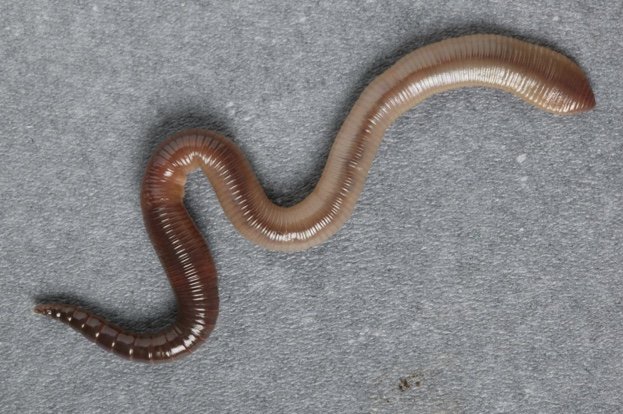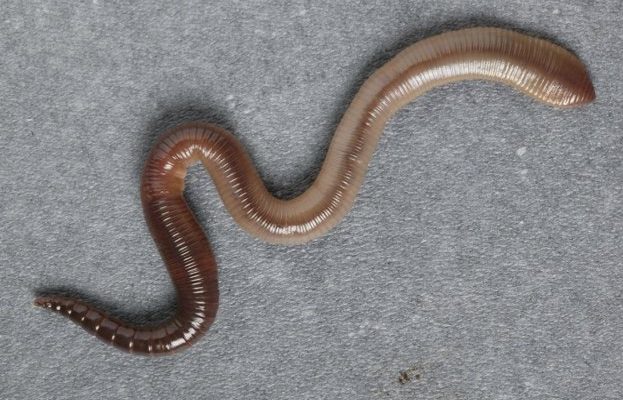
Earthworms come in various types and sizes, with the most common being the **Lumbricus terrestris**, aka the common earthworm. They thrive in moist environments and can be found in gardens, forests, and even fields. Think of them as the unsung heroes of our gardens, working tirelessly below the surface to support life above it.
The Anatomy of an Earthworm
You might be surprised to learn that earthworms are quite fascinating creatures. They can grow up to 14 inches long, and their bodies are made up of segments, giving them that squishy, flexible look. Each segment is packed with muscles that allow them to move through the soil.
One of the most interesting features of earthworms is their ability to respire through their skin. That’s right—earthworms don’t have lungs like we do. Instead, they absorb oxygen and release carbon dioxide through their moist skin. This is why you often see them on the surface after it rains; they’re seeking the wet conditions that help them breathe easier.
Their digestive system is another marvel. Earthworms consume organic material like dead leaves and plant matter. Once ingested, the food travels through their bodies, where it gets turned into nutrient-rich castings. These castings are often referred to as “black gold” in gardening circles because they enrich the soil and help plants thrive.
Why Earthworms are Vital for Soil Health
Here’s the thing: earthworms play a crucial role in maintaining healthy soil. They aerate the earth, creating channels as they burrow. This process not only allows air and water to reach the roots of plants but also improves drainage. Imagine the difference between compacted soil, where roots struggle to grow, and loose soil, where they can spread freely.
Additionally, earthworms help break down organic matter. As they munch on decaying leaves and other plant materials, they turn it into valuable nutrients. When these nutrients are released back into the soil through their castings, they make it easier for plants to absorb what they need to grow healthy and strong.
Moreover, earthworms promote microbial activity in the soil. They help create a thriving community of bacteria and fungi that work together to decompose organic material. This symbiotic relationship is essential for nutrient cycling, which is vital for the ecosystem’s overall health.
Earthworms and the Food Chain
You might be wondering about the bigger picture. Earthworms are a crucial part of the food chain, serving as a food source for various animals, including birds, mammals, and even some reptiles. Without them, many species would struggle to find enough to eat, disrupting the balance of the ecosystem.
For example, many bird species rely on earthworms as a primary food source. When a bird digs in the ground and finds an earthworm, it’s not just filling its belly; it’s also supporting the larger ecological web. This connection shows how even the smallest creatures can have a significant impact on the entire environment.
How to Encourage Earthworm Populations in Your Garden
If you’re keen on harnessing the benefits of earthworms, there are several ways to encourage their presence in your garden. First, avoid using chemical fertilizers and pesticides. These substances can harm earthworms and other beneficial organisms in the soil.
Instead, consider adding organic materials like compost or mulch. These not only provide food for earthworms but also help retain moisture in your garden. You might also want to include some cover crops, like clover or vetch, to provide a habitat and a food source for them.
Another great tip is to maintain a moist environment. Earthworms thrive in damp conditions, so regular watering can encourage their activity. Just be careful not to overwater, as this can lead to waterlogged soil, which isn’t ideal for them either.
Earthworm Myths and Misunderstandings
Despite their importance, many misconceptions about earthworms linger. One common myth is that they only live in soil. While they do primarily thrive there, they can also be found in decaying leaves and compost piles. This adaptability is key to their survival, ensuring they can find food and shelter in varying environments.
Another common misunderstanding is that all earthworms are the same. In reality, there are over 7,000 species worldwide! Some are better suited for certain environments than others. For instance, some prefer acidic soils, while others thrive in more alkaline settings.
Additionally, many people think that if an earthworm gets cut in half, it will grow into two new worms. Not quite! While some species can regenerate, most cannot. Instead, the cut part usually dies, and only the intact segment can survive, which can be a bit of a bummer if you’re hoping for a worm factory.
The Environmental Impact of Earthworms
Earthworms do more than just help our gardens; they also play a role in combating environmental issues. By improving soil structure and health, they help store carbon, which is crucial for fighting climate change. Healthier soils can capture and retain more carbon dioxide, helping to reduce the amount of greenhouse gases in the atmosphere.
Additionally, earthworms can help reduce soil erosion. Their burrowing creates pathways that allow rainwater to penetrate the ground instead of running off, which helps keep topsoil in place. This is especially important in agricultural settings where soil conservation is a priority.
By understanding the vital role earthworms play in both our gardens and the environment, we can better appreciate how these simple creatures contribute to a healthier planet.
In summary, earthworms are far more than mere soil dwellers. They are vital to soil health, play an essential role in the food chain, and contribute significantly to environmental stability. By nurturing and protecting these little heroes, we can ensure our soils flourish, our gardens thrive, and our ecosystem remains balanced.
So, the next time you spot an earthworm squirming through the soil, remember—it’s not just a wriggly creature; it’s a powerful agent of change that supports life on Earth. Let’s cherish and protect them, ensuring they continue their important work for years to come.

